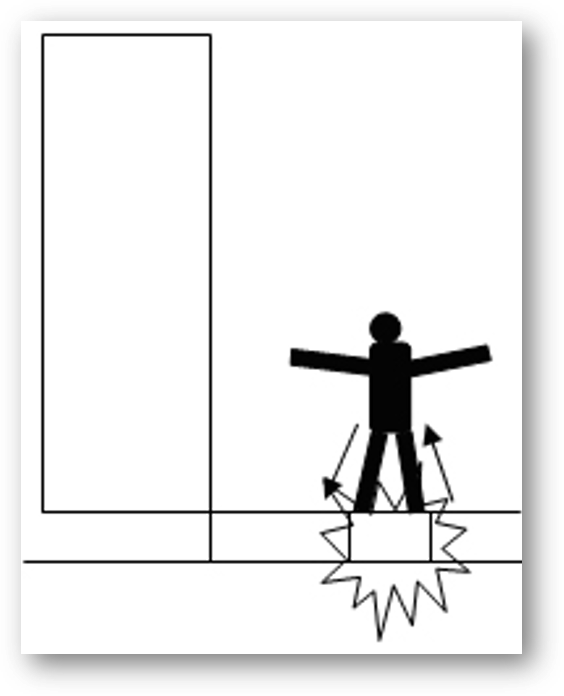Step Potential Calculations

Step potential calculations closely resemble another service offered by Earthing Services, being touch potential calculations. More can be learned by referring to the dedicated service page for touch potential calculations, however this page shall offer some comparison between the two.
Touch potential is the prospective exposure to electrical current in the event that someone is touching a piece of infrastructure at the moment it is subjected to fault electricity. Step potential is a similar concern but considers the likely volume of electricity that may be inducted through the feet and legs of a person standing within the vicinity of a piece of infrastructure during fault conditions. This may not immediately make sense but it is worth considering the behaviours of electricity; it will always seek the path of least electrical resistance, meaning that it is easier to discharge, and it will dissipate over time within the strata of the earth proportionally to the resistance to electricity in the mass of earth.
In the event that the ground mass is offering a poorer conductive environment for electricity to pass than other elements, such as metal pipes, structural steels, or indeed human beings stood on the surface of the ground then electricity will induct to the preferable element, being the path of least electrical resistance (the least opposition to electrical current flow).
How much electricity will pass through a person as a result of step potential voltage is determined by the apparent voltage drop-off between that person’s feet. If you consider that electricity dissipates within the ground its strength has decreased, the difference in the volumes of electricity beneath one foot, and the other is the quantity that will pass through that person’s body. An aim of any electrical earthing system is to control the prospective quantity of electricity that may pass through a human as a result of step potential voltage.
Frequently a rule of thumb is shown to be true being “if compliance with the requirements of touch potentials has been achieved then step potentials are unlikely to be at intolerable levels”.
Ascertain fault clearance time
DNOs usually provide prospective fault clearance times on the basis that their systems are frequently the last to trigger in the event of an electrical fault. Once the fault clearance time has been established the value can be used to reference applicable standards.
Using Standards to Determine Permissible Voltages
Standards govern the decisions that Earthing Services design engineers follow. The company is also fortunate enough that Earthing Services Senior Technical Partner John Maher sits on on a number of standards committees to ensure that the company both contributes towards improvements in knowledge and benefits from the latest developments. Once the applicable standard has been referenced the Earthing Services design engineer will be fully versed on the maximum permitted step potential voltage level.
Evaluate Step Voltage Outputs from CDEGS Software
Using the fault simulation capacity in CDEGS Earthing Services design engineers are able to theoretically determine how a given electrical earthing system may behave in the event of an electrical fault. One of the outputs that CDEGS generates following such fault current simulation is the performance in line with step potential voltages.
Verify Compliance with Standards
Using the performance data from CDEGS following fault current simulations Earthing Services design engineers are able to compare the performance of an electrical earthing system against the requirements of the governing standard. In the event that the site in question does not meet with the minimum performance requirements then further design work will be necessary until it does.
Complete Assessment with any Applicable Recommendations
The final design report will detail how the electrical earthing system performs in line with fault current step potentials and any advice or recommendations will also be provided to ensure that every Earthing Services site receives the best advice and knowledge available.
This page shares many of the same considerations as “Touch potential calculations” and Earthing Services recommends that interested parties also refer to that page.
